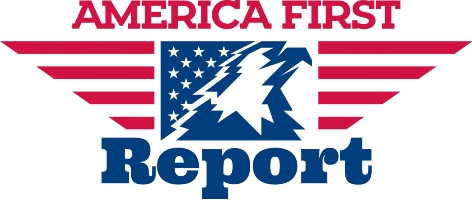- Watch The JD Rucker Show every day to be truly informed.
Silicon Valley Bank (SVB), the country’s sixteenth-largest bank with $209 billion in assets, failed on Friday in one of the most shocking developments to hit the banking sector since the global financial crisis fifteen years ago. SVB’s claim to fame was its deep connection to the venture capital and tech community of Silicon Valley, boasting that “44% of U.S. venture-backed technology and health care IPOs … bank with SVB.” Well, not anymore.
Is the broader banking sector at risk of contagion? This is the issue we need to look at as soon as possible.
SVB’s demise came suddenly (pdf). On Wednesday, the bank announced a loss of $1.8 billion from selling “available for sale” investment securities. Its holding company announced it would raise $2.25 billion to shore up the bank’s capital. Rather than comforting investors and depositors, this surprising announcement spooked them, “causing a run on the bank.” Within a few hours, depositors withdrew some $42 billion in cash, approximately 25 percent of total deposits, leaving the bank with a negative cash balance approaching $1 billion by the end of Thursday. Unable to shore up this shortfall overnight, the initially illiquid and then insolvent bank failed. California’s Commissioner of Financial Protection and Innovation took over the bank and appointed the FDIC as a receiver.
While the FDIC provides deposit insurance up to $250,000, representing less than 10 percent of SVB’s deposits. The vast majority of SVB’s $173 billion in deposits are uninsured. According to the FDIC, “uninsured depositors will receive a receivership certificate for the remaining amount of their uninsured funds.” These certificates will receive dividend payments from future sales of assets, which may not be enough for depositors to be repaid in full.
The issue for SVB was that its assets were heavily weighted to its investment portfolio. Specifically, some 57 percent of SBV’s assets were in marketable securities, primarily U.S. Treasury and mortgage-backed securities. With the rapid rise of interest rates over the past year, the market value of these bonds fell substantially. That fact won’t matter if a bank can hold these bonds until maturity when they will be repaid at par. But if a bank is suddenly forced to sell them to generate liquidity, i.e., to meet depositors’ demands for cash withdrawals, it is forced to sell them at a loss. A vicious circle ensues. Unplanned asset sales generate losses; losses weaken the bank’s financial position, and depositors get nervous and demand their money, requiring more assets to be sold, thereby stimulating further losses. As in the case of SVB, this can happen in days or even hours.
Illiquidity, not insolvency, typically causes banks to fail, which was undoubtedly true for SVB. The question now is, how many other U.S. banks are similarly exposed to this type of liquidity risk? Analysts are working overtime to review the data to see which other banks may be in a similar position to SVB. While SVB had the highest ratio of securities to assets, several other regional banks have more than a third of their holdings in similar categories. Should their depositors get nervous, bank runs could occur elsewhere in the coming days.
The collapse of SVB has sent shockwaves through banking and financial markets. The NASDAQ Bank Index fell nearly five percent on Friday. Crypto has been particularly impacted, as SVB was a preferred bank for the industry. Two of the largest crypto exchanges, Coinbase and Binance, suspended the sale or convertibility of USDC, the stablecoin pegged 1:1 to the U.S. Dollar. As a result, USDC depegged and fell to $0.90 early on Saturday. With USD 41 billion in circulation, this represents an unrealized loss of over $4 billion. Coinbase’s parent Circle confirmed on Saturday that it had $3.3 billion of reserves at SVB that it could not get out of the bank on Thursday. This situation represents a new challenge to the viability of the stablecoin model.
At a minimum, readers should take this opportunity to consider whether their banks are safe and sound and where they may face unknown risks. But that’s not enough. Banking crises are often driven by human nature and psychology as much as asset and liability mismatches. Should investors and depositors gain confidence that the issues at SVB were bank-specific in the coming days, perhaps this storm will pass. However, fear is a highly contagious pathogen. To the extent that a broader panic ensues, we may be looking at a frightening banking and financial markets crisis. Keep a close eye on this one over the coming days.
Views expressed in this article are the opinions of the author and do not necessarily reflect the views of The Epoch Times.
Five Things New “Preppers” Forget When Getting Ready for Bad Times Ahead
The preparedness community is growing faster than it has in decades. Even during peak times such as Y2K, the economic downturn of 2008, and Covid, the vast majority of Americans made sure they had plenty of toilet paper but didn’t really stockpile anything else.
Things have changed. There’s a growing anxiety in this presidential election year that has prompted more Americans to get prepared for crazy events in the future. Some of it is being driven by fearmongers, but there are valid concerns with the economy, food supply, pharmaceuticals, the energy grid, and mass rioting that have pushed average Americans into “prepper” mode.
There are degrees of preparedness. One does not have to be a full-blown “doomsday prepper” living off-grid in a secure Montana bunker in order to be ahead of the curve. In many ways, preparedness isn’t about being able to perfectly handle every conceivable situation. It’s about being less dependent on government for as long as possible. Those who have proper “preps” will not be waiting for FEMA to distribute emergency supplies to the desperate masses.
Below are five things people new to preparedness (and sometimes even those with experience) often forget as they get ready. All five are common sense notions that do not rely on doomsday in order to be useful. It may be nice to own a tank during the apocalypse but there’s not much you can do with it until things get really crazy. The recommendations below can have places in the lives of average Americans whether doomsday comes or not.
Note: The information provided by this publication or any related communications is for informational purposes only and should not be considered as financial advice. We do not provide personalized investment, financial, or legal advice.
Secured Wealth
Whether in the bank or held in a retirement account, most Americans feel that their life’s savings is relatively secure. At least they did until the last couple of years when de-banking, geopolitical turmoil, and the threat of Central Bank Digital Currencies reared their ugly heads.
It behooves Americans to diversify their holdings. If there’s a triggering event or series of events that cripple the financial systems or devalue the U.S. Dollar, wealth can evaporate quickly. To hedge against potential turmoil, many Americans are looking in two directions: Crypto and physical precious metals.
There are huge advantages to cryptocurrencies, but there are also inherent risks because “virtual” money can become challenging to spend. Add in the push by central banks and governments to regulate or even replace cryptocurrencies with their own versions they control and the risks amplify. There’s nothing wrong with cryptocurrencies today but things can change rapidly.
As for physical precious metals, many Americans pay cash to keep plenty on hand in their safe. Rolling over or transferring retirement accounts into self-directed IRAs is also a popular option, but there are caveats. It can often take weeks or even months to get the gold and silver shipped if the owner chooses to close their account. This is why Genesis Gold Group stands out. Their relationship with the depositories allows for rapid closure and shipping, often in less than 10 days from the time the account holder makes their move. This can come in handy if things appear to be heading south.
Lots of Potable Water
One of the biggest shocks that hit new preppers is understanding how much potable water they need in order to survive. Experts claim one gallon of water per person per day is necessary. Even the most conservative estimates put it at over half-a-gallon. That means that for a family of four, they’ll need around 120 gallons of water to survive for a month if the taps turn off and the stores empty out.
Being near a fresh water source, whether it’s a river, lake, or well, is a best practice among experienced preppers. It’s necessary to have a water filter as well, even if the taps are still working. Many refuse to drink tap water even when there is no emergency. Berkey was our previous favorite but they’re under attack from regulators so the Alexapure systems are solid replacements.
For those in the city or away from fresh water sources, storage is the best option. This can be challenging because proper water storage containers take up a lot of room and are difficult to move if the need arises. For “bug in” situations, having a larger container that stores hundreds or even thousands of gallons is better than stacking 1-5 gallon containers. Unfortunately, they won’t be easily transportable and they can cost a lot to install.
Water is critical. If chaos erupts and water infrastructure is compromised, having a large backup supply can be lifesaving.
Pharmaceuticals and Medical Supplies
There are multiple threats specific to the medical supply chain. With Chinese and Indian imports accounting for over 90% of pharmaceutical ingredients in the United States, deteriorating relations could make it impossible to get the medicines and antibiotics many of us need.
Stocking up many prescription medications can be hard. Doctors generally do not like to prescribe large batches of drugs even if they are shelf-stable for extended periods of time. It is a best practice to ask your doctor if they can prescribe a larger amount. Today, some are sympathetic to concerns about pharmacies running out or becoming inaccessible. Tell them your concerns. It’s worth a shot. The worst they can do is say no.
If your doctor is unwilling to help you stock up on medicines, then Jase Medical is a good alternative. Through telehealth, they can prescribe daily meds or antibiotics that are shipped to your door. As proponents of medical freedom, they empathize with those who want to have enough medical supplies on hand in case things go wrong.
Energy Sources
The vast majority of Americans are locked into the grid. This has proven to be a massive liability when the grid goes down. Unfortunately, there are no inexpensive remedies.
Those living off-grid had to either spend a lot of money or effort (or both) to get their alternative energy sources like solar set up. For those who do not want to go so far, it’s still a best practice to have backup power sources. Diesel generators and portable solar panels are the two most popular, and while they’re not inexpensive they are not out of reach of most Americans who are concerned about being without power for extended periods of time.
Natural gas is another necessity for many, but that’s far more challenging to replace. Having alternatives for heating and cooking that can be powered if gas and electric grids go down is important. Have a backup for items that require power such as manual can openers. If you’re stuck eating canned foods for a while and all you have is an electric opener, you’ll have problems.
Don’t Forget the Protein
When most think about “prepping,” they think about their food supply. More Americans are turning to gardening and homesteading as ways to produce their own food. Others are working with local farmers and ranchers to purchase directly from the sources. This is a good idea whether doomsday comes or not, but it’s particularly important if the food supply chain is broken.
Most grocery stores have about one to two weeks worth of food, as do most American households. Grocers rely heavily on truckers to receive their ongoing shipments. In a crisis, the current process can fail. It behooves Americans for multiple reasons to localize their food purchases as much as possible.
Long-term storage is another popular option. Canned foods, MREs, and freeze dried meals are selling out quickly even as prices rise. But one component that is conspicuously absent in shelf-stable food is high-quality protein. Most survival food companies offer low quality “protein buckets” or cans of meat, but they are often barely edible.
Prepper All-Naturals offers premium cuts of steak that have been cooked sous vide and freeze dried to give them a 25-year shelf life. They offer Ribeye, NY Strip, and Tenderloin among others.
Having buckets of beans and rice is a good start, but keeping a solid supply of high-quality protein isn’t just healthier. It can help a family maintain normalcy through crises.
Prepare Without Fear
With all the challenges we face as Americans today, it can be emotionally draining. Citizens are scared and there’s nothing irrational about their concerns. Being prepared and making lifestyle changes to secure necessities can go a long way toward overcoming the fears that plague us. We should hope and pray for the best but prepare for the worst. And if the worst does come, then knowing we did what we could to be ready for it will help us face those challenges with confidence.







